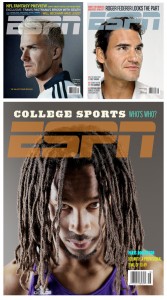Writing Center promo video
One assignment in the English grad class Rhetorical Theory & Praxis (ENGL 652) focuses on student readings in the theory behind composition instruction and support in writing centers. This semester Dr. Bennett offered students the option of producing a promotional video that blended clear messaging with a connection with their audience. Read further to see his video assignment.
Thanks to Christina Johnson and Suzanne Shedd for sharing their project and for the Learning Studio’s own Ben Weaver for shooting it. Really nice work shot on one of our Canon 60Ds.
Video Assignment
Here is the final assignment along with grading criteria and ground rules that may be of interest to other faculty teaching with video for the first time. Thanks to Dr. Bennett for making this available.
OVERVIEW – You are to prepare a three- to five-minute advertising video for the ACU Writing Center that emphasizes your choice of best practices while providing standard publicity information—location, hours, etc. You may wish to highlight our tutoring hierarchy, our hospitality, our collaborative methods, or any other item that illustrates what we do. The goal is to provide boilerplate publicity information but also to demonstrate your understanding of at least one prong of best practices.”
CRITERIA – Grades will be based on overall quality of the video, workmanship, creativity, sound quality, and evidence of effort toward excellence.
GROUND RULES
1. The ACU Learning Studio, located in the Brown Library Learning Commons, is utterly prepared to assist you with this activity.
2. No unedited videos will receive credit. You must use Final Cut, iMovie, or other such program to assemble clips, arrange transitions, add soundtracks, etc.
3. Be careful as you capture video at the WC; many clients will be uncomfortable with being filmed. Consider using the space after hours with actors (I can give you a key).
4. Final products should be uploaded to YouTube with the URL then sent to me via email; I will then imbed them in the class blog.
5. Feel free to consult and share with other teams–ideas, strategies, editing techniques, and software capabilities. Collaboration is good and welcome!
6. Not all of your footage must be shot at the space itself; use texts, promo clips, etc.
7. I am not expecting technical perfection. I am expecting high quality.
8. Many students are excellent editors and videographers, but poor sound engineers. The most common problem I have found with such assignments is poor sound. Be ready to record and re-record your sounds and voiceovers.
REFLECTION ESSAY – After you have completed this assignment, write a short paper that explains the motivations, choices, strategies, and contexts that yielded your digital short. This paper should not merely capture “I made a movie” but, rather, “Here’s what I was trying to do in the movie, here’s why I chose this topic, and here’s how it connects to other readings (inside or outside our class reading list). Ultimately, a person watching the digital short should not need your paper to understand your argument, but it should substantially complement the movie in an explanatory manner.
